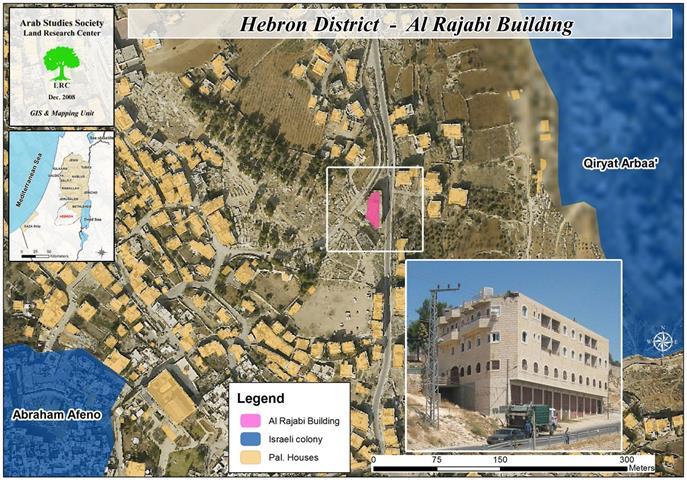Demolition for the Sixth Time in Kherbit Tana
The suffering of Khirbet Tana (Tana Hamlet) residents east of Beit Furik village started back in May 2004, when the Israeli Occupation Army handed over residents of Tana Hamlet Israeli military orders notifying them that their houses will be demolished in addition to their animal sheds and an elementary school built in the year 2001 allegedly for the hamlet's location in an area dedicated for the Israeli army military maneuvers; and accordingly, the Israeli Occupation bulldozers demolished Khirbet Tana for the first time on July 5, 2005.
Later in May 2008, and after residents of Khirbet Tana rebuilt their houses and animals sheds again, the Israeli Army bulldozers again demolished them under the pretext of lacking building permits.
Israeli Military Jeeps again accompanied Israeli bulldozers on January 10, 2010 to Khirbet Tana and demolished for the third time around 25 structures in the community allegedly for lacking building permits due to their location in the area classified as 'C' area according to Oslo Ii Interim agreement. The demolished structures included residential structures, animal sheds, caravans and tents.
Again on December 8, 2010, the Israeli Army bulldozers demolished for the fourth time 28 residential and animal sheds under the pretext of lacking building permits and about 200 local Palestinian residents became homeless. Following the fourth demolition, the ”International Red Cross” organization, and according to the catastrophic humanitarian conditions resulted from the Israeli demolition action in the hamlet, provided residents of Tana with 25 tents and barrackses to protect them from the winter since they became unable to build their barrackses and sheds again.
On February 11, 2011, and without a prior notification, resident of Tana Hamlet were surprised by the presence of the Israeli Army bulldozers which stormed their community and began flattening all of the 25 structures, residential structures, animal sheds and tents that were provided to them by the International Red Cross Organization, causing the displacement of the residents for the fifth time.
Ten Days later, on February 22, 2011, the Israeli Army bulldozers again raided Kherbit Tana for the sixth time and demolished tents and some other structures that were provided to them by the Palestinian National Authority in order to help local residents achieve more protection from winter coldness and rain, but the Israeli occupation forces insisted on turning Tana’s residents life to a non-ending suffering.
Khirbet Tana … General Glance
Khirbet Tana, a small Palestinian community located 6 kilometers to the east of Beit Furik village northeast of the city of Nablus. It is inhabited by 56 Palestinian families with a total population of approximately 350 residents most of whom are actually farmers and herders of animals. Families in Khirbet Tana live in small area houses built from stone or concrete blocks and covered with metal sheets. Khirbet Tana also has many caves which are used by residents to keep their livestock. It is bordered by Beit Dajan village from the north, the Illegal Israeli settlement of Gittit and the Bypass road no. 508 from the west, Beit Furik and Yanun villages from the east and Ar Rajman village from the south. See Map 1
Map 1: Location of Khirbet Tana
The Geopolitical Status of Khirbet Tana
According to the Israeli-Palestinian Interim Agreement on the West Bank and the Gaza Strip, called 'Oslo II' which was signed on September 24, 1995, the Palestinian Territory was divided into areas A, B and C. In Area A, the Palestinian Authority have complete autonomy over administrative and security issues; where in area B, the Palestinians have only civil responsibilities; and in Area C, Israel has full control over the area which constitutes 61% of the total West Bank area. Accordingly, Khirbet Tana is located within the area classified as 'C' and therefore any Palestinian building, construction and land utilization is forbidden in the area as it is compulsory for Palestinians to go to the Israeli Civil Administration in order to obtain building permits. Due to the rigid Israeli building license policy, the Palestinians went and built in area 'C' without licenses, to cope with the natural growth of the population.
Legal & International Status
The systematic house demolition campaign carried out at the hands of Israeli Occupation Army flagrantly violates International Humanitarian Law, and the International Law Rules and Conventions and many United Nations resolutions.
-
Article 53 of the Fourth Geneva Convention: Israel is prohibited to demolish Palestinian houses according to the Convention which provides that: 'Any destruction by the Occupying Power of real or personal property belonging individually or collectively to private persons, or to the State, or to other public authorities, or to social or cooperative organizations, is prohibited, except where such destruction is rendered absolutely necessary by military operations.
-
Article 147 of the Fourth Geneva Convention provides that: 'extensive destruction and appropriation of property, not justified by military necessity and carried out unlawfully and wantonly' is a grave breach of the Convention.
-
The International Convention on the Elimination of All Forms of Racial Discrimination (1965) Article 5 provides that: 'States' Parties undertake to prohibit and eliminate racial discrimination in all of its forms and to guarantee the right of everyone, without distinction as to race, color, or national or ethnic origin, to equality before the law, notably in the enjoyment of the following rights: (e) in particular … (iii) the right to housing'.
-
In the year 2004 the United Nations Security Council called on Israel to stop demolition of Palestinian homes under Resolution No. 1544-(2004), the resolution states: 'The Security Council called on Israel to respect its obligations under international humanitarian law, particularly the obligation not to undertake home demolitions contrary to that law'.
Prepared by
The Applied Research Institute – Jerusalem
ARIJ














